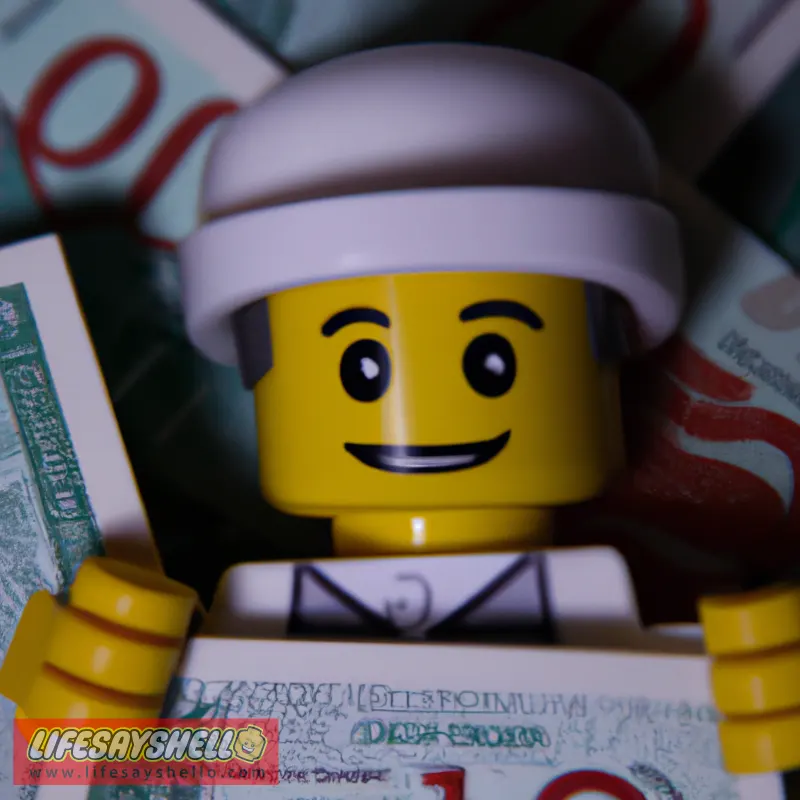Are 2 Dollar Bills Still Made? Unraveling the Mystery of America's Rare Currency

If you've ever come across a $2 bill, you might have wondered about its rarity and whether it's still being produced – join us as we delve into the fascinating world of this unique currency and its place in American history.
Introduction
From the moment they were first introduced, the $2 bill has piqued the curiosity of many. These elusive banknotes, adorned with the portrait of Thomas Jefferson, have become somewhat of a novelty in the United States.
In this article, we'll explore the history of the $2 bill, its production timeline, and the factors that have contributed to its rarity. We'll also discuss the design elements, historical significance, and the collectibility of this unique piece of US currency. Lastly, we'll contemplate the future of the $2 bill in an increasingly digital world.
The Production of the $2 Bill
A Brief Timeline of the $2 Bill Production
The $2 bill has a long and storied history, dating back to the earliest days of the United States. Here's a brief timeline of its production:
- 1862: The first $2 bill was issued as a United States Note, featuring a portrait of Alexander Hamilton.
- 1869: The design was changed, and Thomas Jefferson became the new face of the $2 bill.
- 1918: The $2 bill was briefly issued as a large-sized Federal Reserve Bank Note, featuring a vignette of a World War I battleship.
- 1928: The $2 bill was redesigned and issued as a small-sized United States Note, with Thomas Jefferson's portrait on the obverse and Monticello on the reverse.
- 1966: The $2 bill was discontinued due to low demand and circulation.
- 1976: In celebration of the US Bicentennial, the $2 bill was reintroduced as a Federal Reserve Note, with a new reverse design featuring John Trumbull's painting "Declaration of Independence."
- Present day: The $2 bill remains in circulation but is produced in limited quantities.
Current Status of the $2 Bill Production
Although the $2 bill is not as common as other denominations, it is still being produced by the Bureau of Engraving and Printing (BEP). The production of $2 bills is limited, with the most recent print run occurring in 2019. According to the Federal Reserve, there were approximately 1.3 billion $2 bills in circulation as of 2020, accounting for only about 3% of the total US currency in circulation.
Factors Contributing to the Rarity of the $2 Bill
The $2 bill's relative rarity can be attributed to a few factors:
- Low demand: Due to its uncommon nature, the public and businesses are less likely to use the $2 bill in everyday transactions, leading to lower demand for the denomination.
- Limited production: The BEP produces significantly fewer $2 bills compared to other denominations, further contributing to its scarcity.
- Collectibility: Many people hold onto $2 bills as keepsakes or collectibles, removing them from circulation and making them even rarer.
The Design and Significance of the $2 Bill

Unique Design Elements of the $2 Bill
The $2 bill boasts some distinctive design features that set it apart from other US banknotes:
- Portrait: The obverse of the $2 bill features a portrait of Thomas Jefferson, the third President of the United States and the principal author of the Declaration of Independence.
- Reverse: The reverse of the current $2 bill showcases John Trumbull's painting "Declaration of Independence," depicting the moment when the Founding Fathers presented the document to Congress.
- Inscriptions: The $2 bill includes several inscriptions, such as "Federal Reserve Note," "The United States of America," "Two Dollars," and "In God We Trust."
Historical Figures and Events Depicted on the $2 Bill
The $2 bill pays tribute to some significant figures and events in American history:
- Thomas Jefferson: As mentioned earlier, the portrait of Thomas Jefferson graces the obverse of the $2 bill. Jefferson played a crucial role in the founding of the United States and the drafting of the Declaration of Independence.
- John Trumbull's "Declaration of Independence": The reverse of the $2 bill features this iconic painting, which captures a pivotal moment in American history – the presentation of the Declaration of Independence to Congress.
The Significance of the $2 Bill in American Culture
The $2 bill holds a unique place in American culture, often seen as a symbol of luck or a collector's item. Its relative rarity has led to various superstitions and urban legends surrounding the bill, such as the belief that it brings good fortune or that it's no longer legal tender (which is false). The $2 bill is also popular as a gift or keepsake for special occasions, such as graduations or weddings.
The Value and Collectibility of the $2 Bill
The Worth of the $2 Bill in Comparison to Its Face Value
In most cases, a $2 bill is worth its face value – two dollars. However, certain factors can increase its value, such as the bill's age, condition, and rarity. Older $2 bills, particularly those from the 19th and early 20th centuries, can be worth significantly more than their face value, depending on their condition and rarity.
Factors That Influence the Value of a $2 Bill
Several factors can impact the value of a $2 bill:
- Age: Older bills, especially those from the 19th and early 20th centuries, tend to be more valuable than newer ones.
- Condition: Bills in pristine, uncirculated condition are generally more valuable than those with signs of wear and tear.
- Rarity: Certain $2 bills, such as those with specific serial numbers or printing errors, can be worth more due to their rarity.
- Series and signatures: The series year and the signatures of the Treasurer of the United States and the Secretary of the Treasury can also affect a $2 bill's value.
The $2 Bill as a Collector's Item
The $2 bill's unique design and relative scarcity make it a popular collector's item. Collectors often seek out older bills, those in exceptional condition, or those with unique features, such as specific serial numbers or printing errors. Additionally, some collectors specialize in collecting $2 bills from different series years or with different signatures.
The Future of the $2 Bill
The Possibility of New Designs and Production
While there are no immediate plans to redesign or increase the production of the $2 bill, it's always possible that the US Treasury could decide to issue a new design or increase production in the future. However, given the $2 bill's low demand and circulation, it's unlikely that any significant changes will be made in the near term.
The Role of the $2 Bill in Modern Society
As society continues to move towards digital payment methods and cashless transactions, the role of the $2 bill in modern society remains uncertain. While it's unlikely that the $2 bill will ever become a widely used denomination, it will likely continue to hold a special place in American culture as a symbol of luck, a collector's item, and a unique piece of US currency.
The Potential Impact of Digital Currency on the $2 Bill's Future
As digital currencies and cashless transactions become more prevalent, the future of all physical currency, including the $2 bill, is uncertain. However, given the $2 bill's unique status and cultural significance, it's likely that it will continue to be produced and circulated, albeit in limited quantities, for the foreseeable future.
Conclusion
The $2 bill remains a fascinating and enduring piece of American history and culture. Its rarity, unique design elements, and historical significance make it a sought-after collector's item and a symbol of luck for many. As we continue to move towards a digital world, the future of the $2 bill is uncertain, but its legacy as a distinctive piece of US currency is sure to endure.




Comments